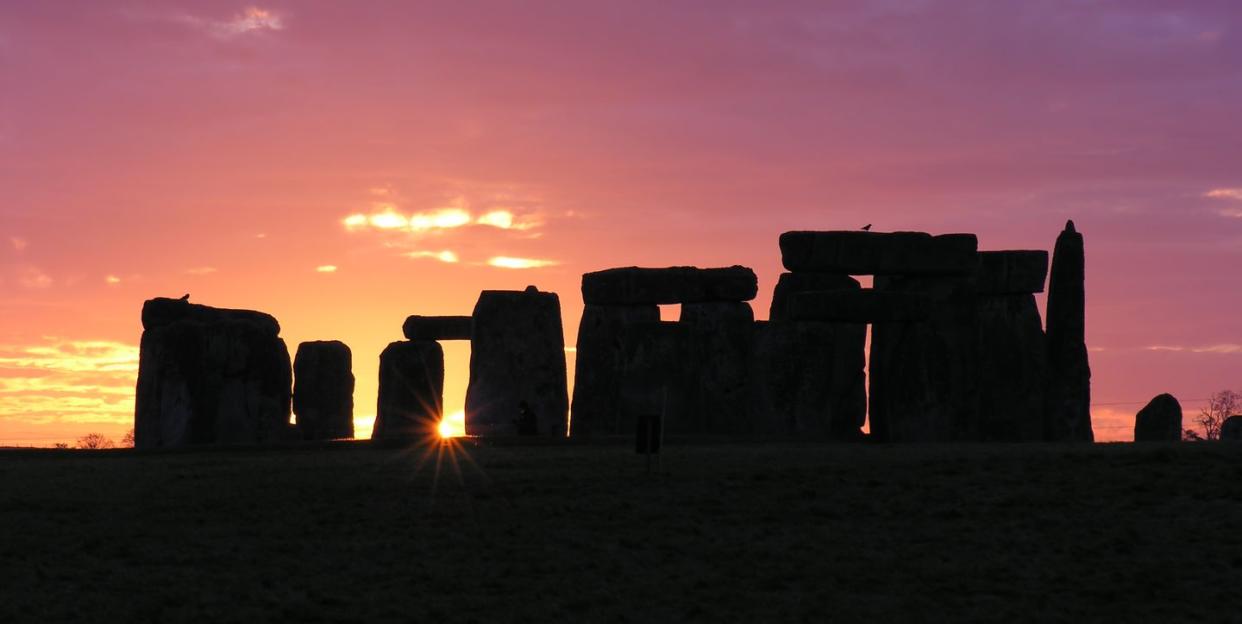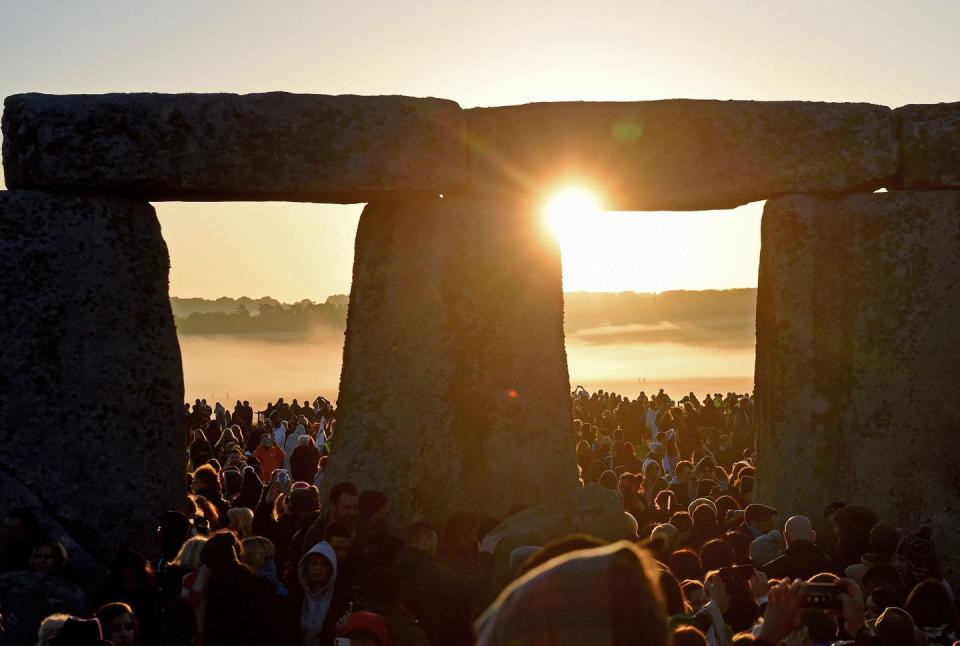You Can Livestream the Gorgeous Summer Solstice at Stonehenge This Year

Stonehenge will livestream its annual summer solstice event due to the coronavirus pandemic.
The yearly celebration is typically held at the prehistoric monument in Wiltshire, England, and draws thousands of people.
English Heritage will capture the moment on its social media channels on June 21.
If you’ve ever wanted to watch the sun rise over Stonehenge to mark the summer solstice, now is your chance to do it for free. The yearly celebration is typically held at the prehistoric monument in Wiltshire, England, where loads of people congregate to witness the age-old phenomenon. But this year, the coronavirus pandemic has deemed holding the event unsafe, so English Heritage is bringing it to the world via livestream.
“We have consulted widely on whether we could have proceeded safely and we would have dearly liked to host the event as per usual, but sadly, in the end, we feel we have no choice but to cancel,” Stonehenge director Nichola Tasker shared in a statement, per Travel + Leisure. Instead, the organization will capture the moment on its social media channels (including Youtube) and broadcast it on June 21 to anyone who’s willing to wake up early enough to watch.

“We hope that our [livestream] offers an alternative opportunity for people near and far to connect with this spiritual place at such a special time of year,” Tasker added. “And we look forward to welcoming everyone back next year.”
If you’re unfamiliar, witnessing the summer solstice at Stonehenge is a tradition that holds hearty weight for many. According to BBC News, in 2019, an estimated 10,000 people gathered at the monument to watch the sun rise behind its Heel Stone, which marks the entrance to the ancient circle, and rays of sunlight pour into its center marking the start of the longest day of the year.
The celebration is especially important to pagans, who have a spiritual connection to the solstices, around which it’s believed Stonehenge was designed in 2500 BC. “Modern-day pagan and druid groups believe it is their temple and it is their right to worship there, so [coming to Stonehenge is] the equivalent for them of coming to a church or cathedral,” Heather Sebire, the English Heritage senior curator at Stonehenge told Time.
Pagan or not, visiting Stonehenge at any time of year, especially at summer solstice, is impactful because it’s an experience shared with prehistoric people. And now, with the click of your mouse or phone screen, you can experience it, too.
A post shared by English Heritage (@englishheritage) on Apr 3, 2020 at 8:40am PDT
Support from readers like you helps us do our best work. Go here to subscribe to Prevention and get 12 FREE gifts. And sign up for our FREE newsletter here for daily health, nutrition, and fitness advice.
You Might Also Like

